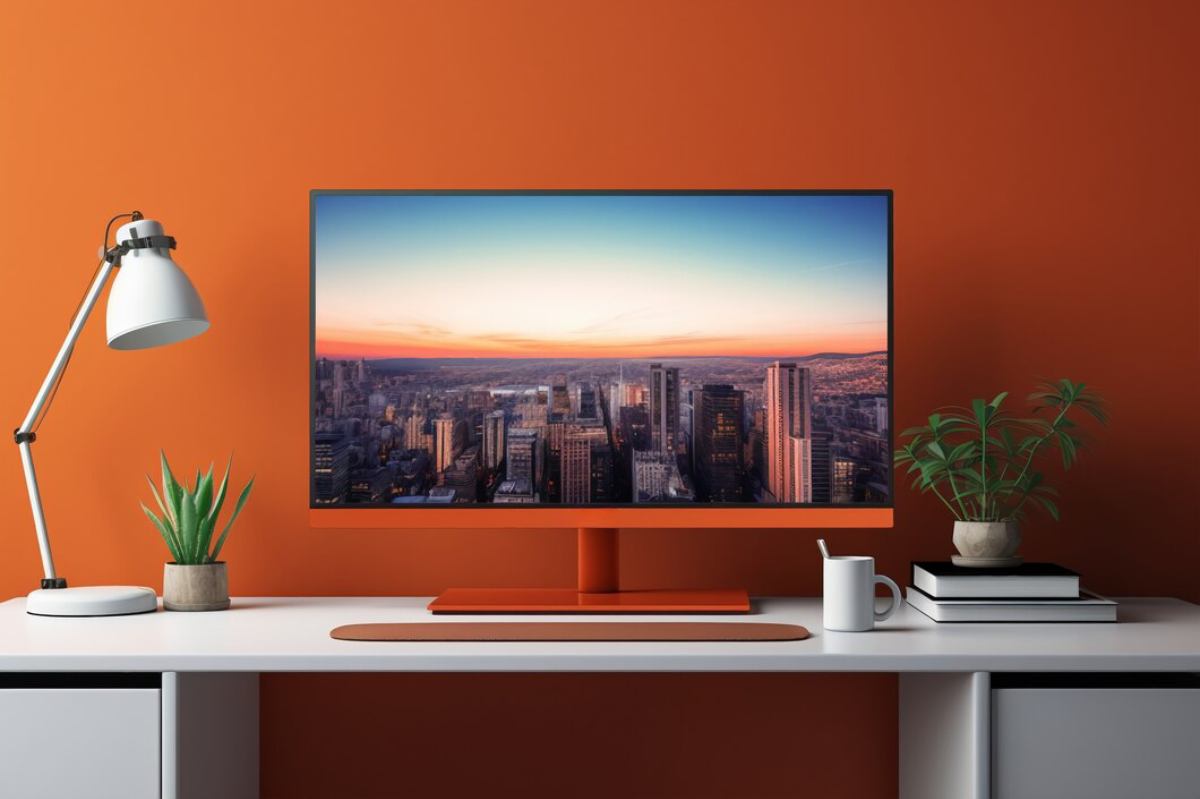The world of the image does not stop evolving, which causes more and more terms and questions of interest to appear that can engender all kinds of misinformation or ignorance. In that sense, HDR technology can be somewhat complex for those who are not very familiar with the subject. It is for this very reason that today I wanted to raise this question. That is, 4K HDR vs 4K SDR. Which one should we choose?
On this occasion, I will tell you everything you need to know to choose between one type and another and my opinion on each circumstance. However, before moving on to this point, it is essential to clarify what each technology is, their main differences, etc., so that we can understand exactly what each offers us, how and why.
Table of Contents
4K HDR Monitor vs 4K SDR: What Is HDR
Before I talk to you about this topic, I would like to recommend a specific topic: what HDR is and why it is important in games. Some time ago, I explained to you what the characteristics of this technology are and why it could be important when choosing a monitor (or not) equipped with it. Although in this topic I will also talk about it, if you want to delve further into the matter, you can do so through the previous link.
With that being said, what is HDR? The first thing I can tell you is that HDR stands for “High Dynamic Range”. Or “High Dynamic Range” in Spanish. As such, this being something that we can intuit in its name, it is a technology used in photography, television, cinema and other multimedia devices to improve the quality and realism of the image. The main idea behind HDR is to extend the range of brightness and detail that a picture can display, both in the darkest and brightest areas.
In a standard dynamic range (SDR) image, detail in the lightest or darkest areas can be lost due to limitations in how the image is captured and displayed. For example, when taking a photo on a sunny day, details in the shadows may be lost because the camera cannot capture the information in such dark areas compared to the bright parts.
Scenes At Different Exposure Levels
darkest to the brightest. These images are then combined using specialized software to create a single image that makes the most of each of them. The end result is an image with a more excellent range of brightness and detail. This translates to more vibrant colours, more detailed shadows, and brighter highlights.
In television and film, HDR allows for a more immersive and realistic viewing experience. In the end, what we achieve when we use it is that the images are of higher quality and fidelity. At least if we take into account how the human eye perceives light and colour. Now, not everything is so simple. Although it may seem logical, it is important to keep in mind that we can only enjoy images with HDR as long as we have a device that is compatible with it.
The same thing happens with images. Playing any non-HDR video on a monitor with HDR will not make the image look better. It will be the same. That being said, and by way of summary, HDR is a technology that improves image quality by providing a greater range of brightness and detail, resulting in more vivid colours and a more realistic and immersive viewing experience.
4K HDR monitor vs 4K SDR: what is SDR
To begin with, and as with HDR, the first thing I want to explain about SDR is where it comes from. That is its initials. In this case, it comes from “Standard Dynamic Range”. Its translation into Spanish would be “Standard Dynamic Range”, which already tells us a lot. In general, we can also say that it is the traditional standard for representing images and multimedia content on screens, cameras, and electronic devices. So while it’s going to be very clear that SDR is worse than HDR is worse in terms of quality, I want you to keep in mind that this doesn’t mean it’s bad as such.
It’s just a bit older, but it’s what you’ve probably been using for the past few years. That being said, we can say that in contrast to HDR, SDR has a narrower range of brightness and displays a lower level of detail in the lightest and darkest areas of an image. In an SDR image, details in the darkest or brightest parts may be lost due to restricted dynamic range.
This means that when there is an image with a lot of contrast (such as a scene with strong lights and a lot of shadows), the image will be worse. As? Well, for the details. There will be areas that in HDR would be seen in varying degrees of lightness, while in SDR, they may be completely black or white with no visible ranges or variances. This makes the differences less obvious and everything more uniform… In a Bad way.
A Very Long-Standing Standard
SDR has been the standard for image representation for a long time and has been widely used in televisions, monitors, cameras, and other devices. However, with the advent of HDR, there has been a significant improvement in image quality and viewing experience. Little by little, it is changing, and HDR is expected to become the standard within a short time.
HDR, as mentioned above, uses multiple exposures to capture more information in dark and bright areas, resulting in more realistic and detailed images. HDR content displays more vibrant colours, richer shadows, and more brilliant highlights, creating a more immersive viewing experience closer to what the human eye can perceive in real life.
All in all, it is still a somewhat expensive technology in certain situations. This is one of the reasons why SDR remains the traditional standard for rendering images with a more limited dynamic range. In general, it is a much cheaper technology both at the production and consumption levels. Thus, it is much more affordable for most budgets, which means that it continues to be quite popular in general terms.
Also Read: How Does Blue Light From Screens Affect Us?
4K HDR Monitor vs 4K SDR: Main Differences
That said, to continue delving into the issue, I want to present a very brief summary of their main differences. Although this topic would give a lot and could develop it much more, I understand that it would not be the most appropriate. After all, a more extensive explanation would also imply using too technical terminology. My idea with this topic is that you can understand it in the simplest way possible. That is why I will try to be as brief as possible in order to simplify everything.
Colour Range
HDR. HDR allows for a wider, more saturated colour gamut, resulting in more vibrant, lifelike colours. It uses standards like DCI-P3 to improve colour saturation and offers a more immersive viewing experience.
RDS. SDR has a more limited colour gamut compared to HDR, which means colours can look less vivid and saturated on screen.
Colour Depth
HDR. HDR typically comes with a higher colour depth, such as 10-bit or higher, allowing more tones and details to be displayed in the image. This is especially evident in colour gradients and
areas with subtle changes in hue.
RDS. SDR typically has an 8-bit colour depth, which still allows for a wide colour gamut, but doesn’t achieve the level of detail and smoothness that HDR can achieve with 10-bit or higher.
Dynamic range (brightness range from black to full brightness)
HDR: The main feature of HDR is its wide dynamic range. It can bring out detail in the darkest and brightest areas of an image, creating sharper contrast and a greater sense of depth.
RDS: SDR has a more limited dynamic range than HDR, which means you can lose detail in dark areas or overexpose bright parts of the image.
viewing experience
HDR: The viewing experience with HDR is more immersive and realistic due to its wider colour gamut, greater colour depth, and wide dynamic range. Images appear more vivid, detailed and with higher contrast.
RDS. Although SDR has been the standard for a long time and offers decent image quality, it cannot match the viewing experience of HDR due to its limitations in dynamic range and colour depth.
Monitor (Panel) Requirements
HDR. To fully enjoy HDR, the TV or monitor panel must meet certain requirements in terms of colour gamut, colour depth, brightness, and contrast. High-end panels are usually better suited for HDR.
RDS. SDR panels may be more affordable in terms of price, but they don’t offer all the visual advantages of HDR. Some high-quality SDR panels can provide a good viewing experience but fall short of HDR in realism and detail.
The quick summary is that HDR is superior to HDR in almost every way… except price. Being a higher type of technology, it stands to reason that it is more expensive, which is the main reason why someone might go for SDR over HDR.
Which One Should I Choose?
It all depends on two aspects: price and quality. If we can ignore the first point, that is, the cost of the monitor, I will always recommend that you choose a monitor with HDR. At least as long as it has the resources to reproduce that technology with good quality. The ideal is to opt for a monitor with minimally high performance so that it is worth it. If we take all this into account, HDR will always be better than SDR because the image quality will be much higher.
So, if your pocket allows it, choosing HDR over SDR will be the recommendation I will give you in almost any circumstance. However, I understand that the cost is a very important value, so it depends a lot on this. In the end, the best thing is that the product meets our needs and possibilities. Therefore, if it gets too out of hand, you better go to SDR. Everything is said. We must not forget a subject: the image.
If the source of the image does not work with HDR, it is foolish to choose this type of monitor. If you are going to use it to play games, for example, or to watch movies in 2K or 4K, practically all of them have HDR, so you will be able to take advantage of it in a reasonably consistent manner. Lower qualities can also incorporate it, of course, but there it is better that you look at it more carefully. Now, if you are asking about a 4K monitor (as we indicated in the title), the recommendation is undoubtedly HDR. It is the best.
Also Read: Learn How To Adjust The Sharpness Of Your Monitor Quickly




